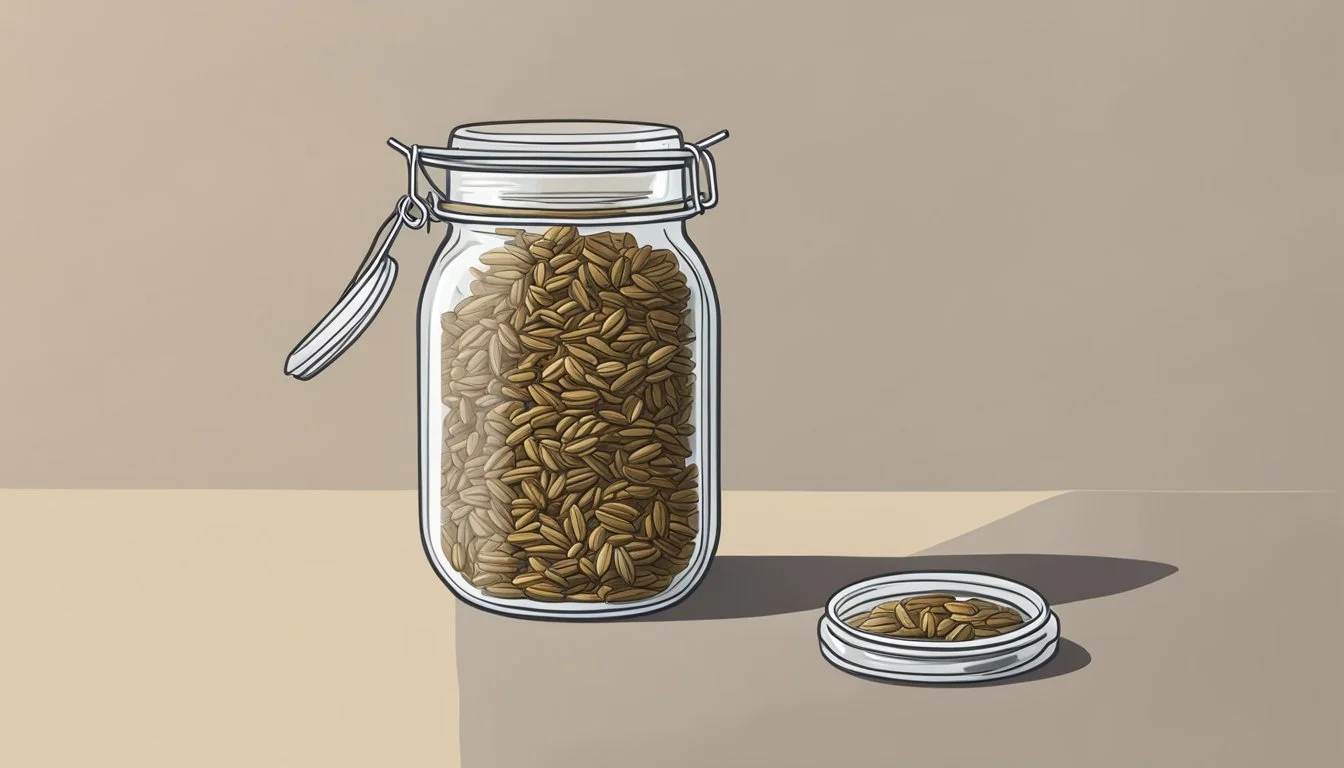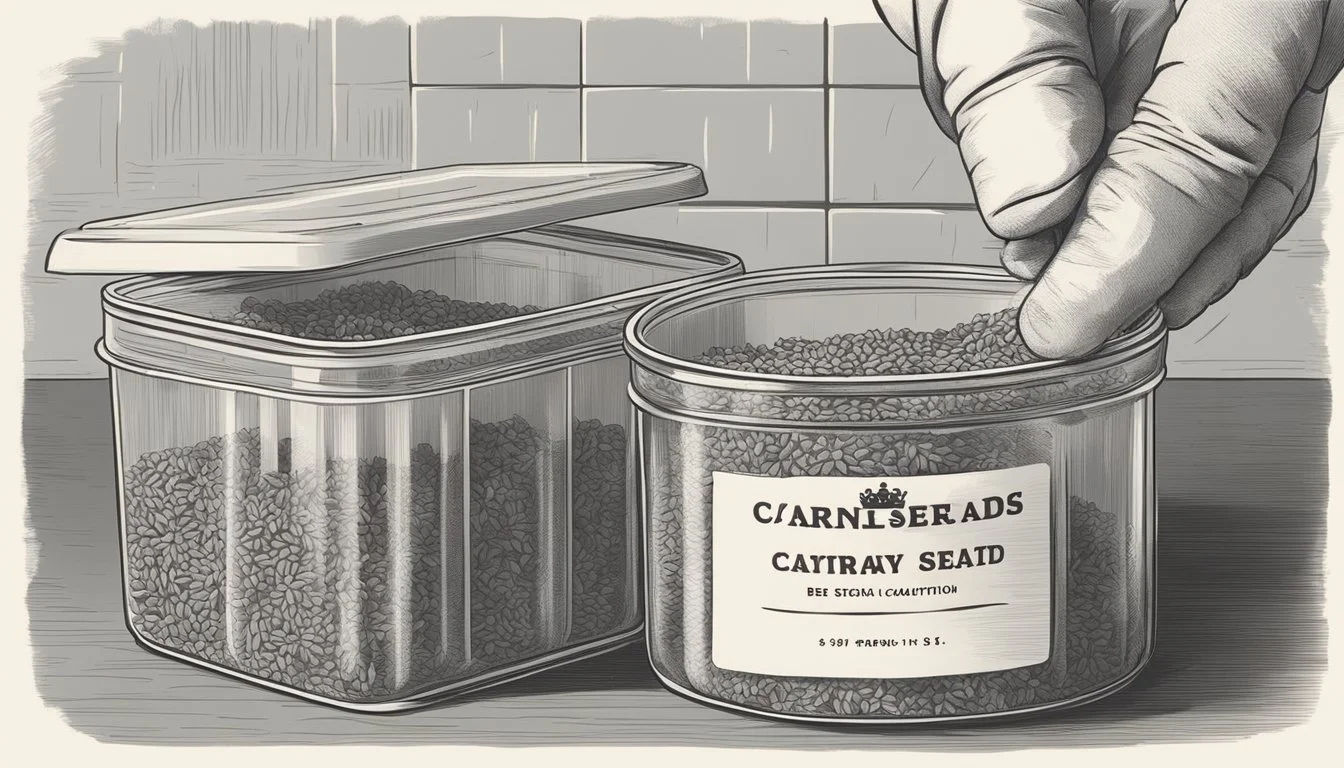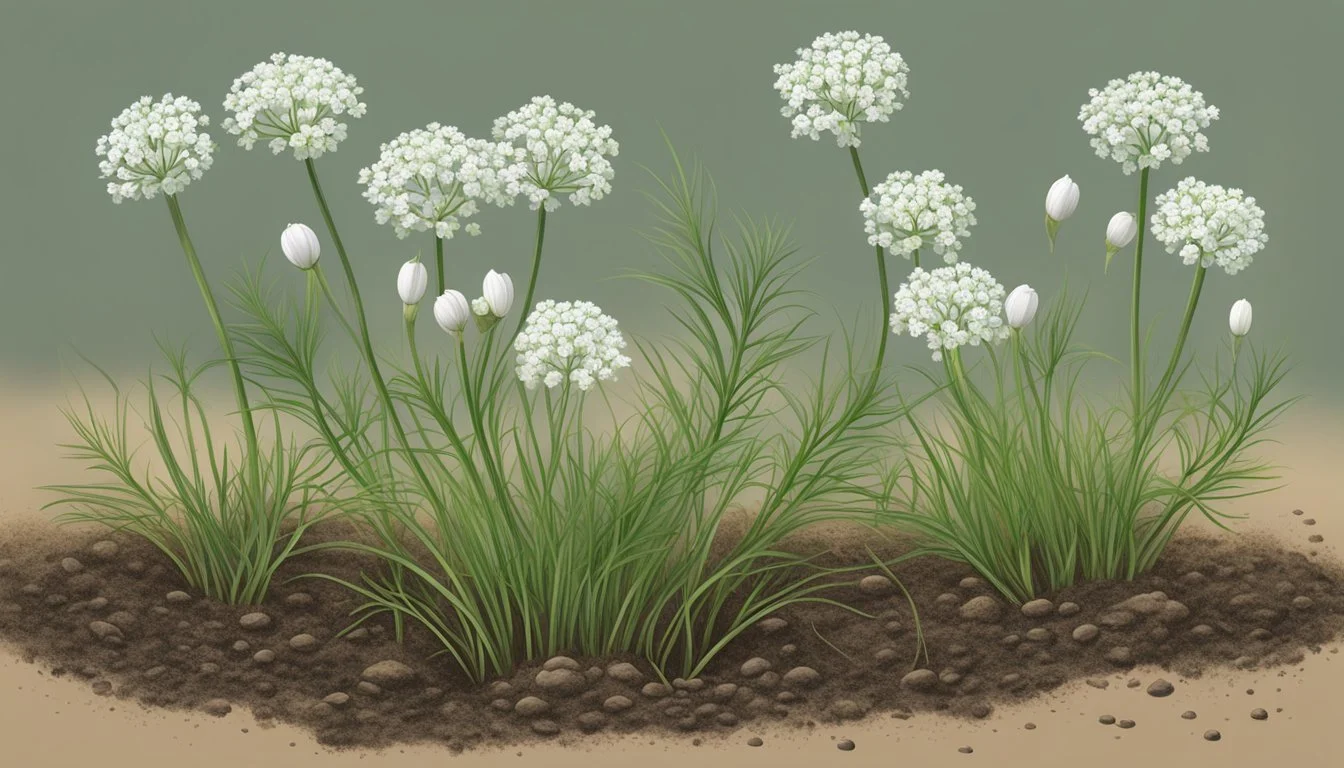How Long Do Caraway Seeds Last?
Shelf Life and Storage Tips
Caraway seeds (how long do seeds last?) are known for their distinctive flavor, used in various cuisines around the world. These seeds, derived from the caraway plant, are not only valued for their taste but also for their long shelf life. When stored properly, caraway seeds can maintain their best quality for about three to four years, enabling cooks to use them over extended periods without significant loss of flavor or potency.
Proper storage is key in preserving the shelf life and efficacy of caraway seeds. Storing them in airtight containers, away from heat, moisture, and direct light helps in retaining their aromatic and culinary properties. While caraway seeds have a decent shelf life, it's defined by several factors such as the condition at purchase, the storage environment, and the packaging quality.
For those keeping a well-stocked pantry, understanding the longevity of caraway seeds is vital to ensure that the spices used in cooking contribute their full, intended flavor to dishes. Whether purchased in bulk or as part of a spice collection, ensuring that these seeds are stored correctly can prolong their usability, making them a reliable ingredient for numerous recipes.
Caraway Seeds Basics
Caraway seeds are known for their distinctive flavor, which is a staple in various cuisines and has a place in culinary tradition. They are derived from the caraway plant and are used both as a spice and an herb.
Culinary Uses
Caraway seeds, small and brown with a sharp, slightly bitter taste, are reminiscent of a blend between anise and dill (how long does dill last?) in flavor. Majorly featured in European cooking, they are a common inclusion in rye bread, lending it a unique earthiness. The seeds are also sprinkled on various bread types such as Irish soda bread, acting as a flavor enhancer. Not only limited to bread, caraway seeds excel in cooked applications; they are often added to sauerkraut, soups, stews, cheese, and are used to season carrots which benefit from their aromatic presence.
Breads: Rye, Irish soda
Vegetables: Carrots (seasoned with caraway)
Savory Dishes: Soups, stews, sauerkraut, cheese dishes
Historical Significance
Caraway seeds have been valued since antiquity as both a culinary and medicinal herb. The caraway plant, which is related to parsley, has ties to various traditional cuisines, from European to North African. In historical meal preparation, caraway seeds have been utilized as a digestion aid and were believed to possess protective properties. Furthermore, the seeds' storage and consumption connect to old-world customs, especially in preparing long-lasting foods like preserved meats and pickles, given their preservative qualities. The herb has a rich history intertwined with folk beliefs and natural remedies, securing its place beyond mere culinary applications.
Optimal Storage Conditions
To maximize the shelf life of caraway seeds, one must consider the type of container used and the environmental conditions of the storage area.
Choosing the Right Container
Caraway seeds retain their quality best when stored in containers with tight-fitting lids. An airtight container is ideal to prevent exposure to air and moisture, which can diminish flavor and potency. Glass or plastic containers can both be suitable if they are sealed correctly.
Ideal Environmental Factors
For ideal storage, caraway seeds should be kept in a cool, dark place away from direct sunlight. Room temperature or below is preferable, but the area should be consistently dry to prevent any moisture accumulation. Avoid storing caraway seeds near sources of heat, such as ovens or stoves, to maintain optimal shelf life.
Maximizing Shelf Life
To prolong the shelf life of caraway seeds, it's essential to understand the factors that contribute to their freshness and quality. Proper storage plays a significant role in preventing spoilage and maintaining the seeds' potency.
Preventive Measures Against Spoilage
Caraway seeds can remain fresh for up to four years when stored correctly. To achieve this, one must:
Store in a cool, dark cupboard away from direct heat or sunlight.
Keep in an airtight container to prevent moisture and air ingress, which can degrade the seeds' quality.
Refrigeration can further extend the seeds' shelf life, although it's not necessary for shorter-term storage.
The condition at the time of purchase is critical. Always check the expiration date on the label and opt for seeds in good condition without any signs of spoilage.
Signs of Deterioration
Caraway seeds, like other seeds, will show specific signs when they begin to deteriorate:
Discoloration: The seeds should retain their natural color. Any loss of color suggests they are past their prime.
Odor: Fresh caraway seeds have a distinct, pungent smell. A weak or stale odor indicates loss of potency.
Texture: They should be dry and hard. Softness can point to moisture intrusion.
Inspect for mold, insects, or other contaminants: The presence of these is a clear indication that the seeds are no longer suitable for consumption.
Caraway Plant Cultivation
Caraway, scientifically known as Carum carvi, is a biennial plant that thrives in full sun and requires careful growth and germination planning, as well as proper harvest and storage methods to maintain the quality of its seeds.
Plant Growth and Germination
Caraway prefers full sun exposure, although in hotter climates, partial shade during peak afternoon heat can be beneficial. For successful germination, caraway seeds should be sown shallowly at 1/4 inch depth, with about one seed per inch in rows spaced 18 inches apart. Optimal germination occurs at 10-14 days in either early spring or autumn, with both plantings blooming and producing seeds in the second year. Once germinated, seedlings should be thinned to 4-8 inches apart.
Soil Requirements: Well-drained, fertile soil.
Planting Times: Early spring or fall for second-year blooming.
Spacing: 18 inches between rows, thin seedlings to 4-8 inches.
Watering: Regular watering until established, less frequent afterwards.
Growing caraway requires vigilant weed control, especially in the young stages of the plant. Caraway's deep taproot means that care must be taken not to damage the root system during cultivation.
Harvest and Post-Harvest Handling
The caraway plant typically requires two years to produce seeds. In the first year, it will develop a rosette of leaves and in the following year, it sends up a flowering stem with seeds. Harvesting generally occurs in the plant's second year when seed heads brown and ripen. To harvest, the umbels—flower clusters—are cut and dried, after which seeds are separated and cleaned.
Post-Harvest Handling:
Drying: Hang or lay umbels in a warm, dry place with good air circulation.
Threshing: Once dried, gently thresh to separate seeds from the umbel.
Storage: Store in a cool, dry place. Properly dried, caraway seeds maintain their potency for up to three years.
Caraway plants are relatively hardy but should be monitored for common pests that can affect yield and quality. Mulching around plants can help retain soil moisture and suppress weeds, providing a more favorable growing environment.
Utilization and Preservation
To maintain the distinctive flavor and aroma of caraway seeds, proper utilization and preservation methods are crucial. This section explores optimal uses in cooking and the best long-term preservation techniques.
Cooking With Caraway
When cooking with caraway seeds, one captures their warm, slightly sweet, and earthy taste that enhances a variety of dishes. Toasting the seeds can unlock more of their aroma before incorporating them into recipes. Grinding just before use is also recommended to retain their pungent flavor. Caraway seeds can be a versatile addition to bread, soups, and even teas.
Long-Term Preservation Methods
For long-term storage, caraway seeds retain their potency for about three to four years if stored correctly. It’s best to place them in airtight containers with tight-fitting lids and keep them in a cool, dark, dry place. Freezing is also an option and can be done with whole seeds; however, ground seeds may lose their flavor more quickly. To freeze, one might:
Place seeds in airtight bags or containers.
Label with the date to track how long they have been stored.
Keep frozen to preserve the seeds’ aromatic properties.
Using these methods will ensure the caraway seeds remain a flavorful addition to any dish.
Understanding Quality and Freshness
Caraway seeds' longevity is deeply tied to their quality and freshness at the time of purchase, which directly influences their flavor and potency. Recognizing the freshness and maintaining the quality of caraway seeds are essential to ensure they impart the desired savory, sweet, and slightly pungent aroma and taste to dishes.
Sensory Indicators of Caraway Quality
To assess the quality of caraway seeds, one should analyze:
Flavor: Fresh caraway seeds exhibit a balanced earthy, savory, and slightly sweet flavor profile. If the taste is noticeably diminished, the seeds may be past their prime.
Aroma: A potent, pungent aroma is a hallmark of fresh caraway seeds. A lackluster smell indicates a loss of essential oils, which translates to decreased quality.
Factors Affecting Caraway Potency
Several critical factors determine the potency of caraway seeds:
Storage Conditions: Caraway seeds should be kept in airtight containers away from heat and moisture to preserve their essential oils and prevent flavor loss.
Age: Over time, caraway seeds lose their potency. Although they can last up to 3 to 4 years, their optimal flavor is best enjoyed when they are used closer to their harvest date.
Exposure to Air and Light: Prolonged exposure to air and light can degrade the quality of caraway seeds, causing them to lose their characteristic sweetness and robust aroma.
Practical Tips and Tricks
In ensuring both longevity and efficacy of caraway seeds, one must consider their application and appropriate storage. These elements are fundamental in preserving their distinct flavor and aroma.
Usage and Substitution
Caraway seeds, known for their licorice-like flavor, are versatile in the culinary world. When a recipe calls for caraway and none is on hand, one can substitute with fennel seeds, (how long do fennel seeds last?) anise, or dill as all share a similar taste profile. In savory dishes, a pinch of ground nutmeg (how long does nutmeg last?) or cinnamon could potentially replace caraway, though the flavor will differ slightly. The key is to start with smaller quantities and adjust to taste, as these substitutes can have stronger flavors.
Storage Enhancements
Proper storage is essential to maintain the caraway seed's character and extend its shelf life. They should be kept in a cool, dark place away from direct light, which could degrade their quality. Ideally, they should be in airtight containers to prevent moisture and air from diminishing their aroma. The optimum storage temperature should be consistent and moderate, avoiding the fluctuations that can occur near appliances or in direct sunlight. By grinding caraway seeds only as needed, their essential oils are preserved, ensuring a fresher flavor upon each use.
Safety and Handling Precautions
Consumers can ensure the longevity and safety of caraway seeds by adopting proper storage methods and being vigilant about signs of spoilage. The following precautions will help maintain their quality and safety.
Avoiding Contamination
Proper storage is paramount for keeping caraway seeds fresh and safe to consume. They should be stored in airtight containers to protect against exposure to air and moisture, which can quickly degrade quality. Containers must be kept clean to prevent contamination from insects or other pantry items. Additionally, storing caraway seeds in a cool, dark environment will further safeguard against the degradation that can be caused by light and fluctuating temperatures.
Key points for storage:
Use airtight containers.
Store in a cool, dark place.
Keep containers clean and free from insects.
When to Discard
Caraway seeds do not have an indefinite shelf life, and it's important to know when they are no longer suitable for use. Although they may last several years, one should always check the expiration date on the label as an initial guideline. If the seeds exhibit any signs of mold, discoloration, or an off odor, they should be discarded. These indicators suggest that the seeds have been compromised and could pose a health risk if consumed.
Indicators of spoilage:
Presence of mold.
Noticeable discoloration.
Unpleasant or unusual odor.
Lifecycle of Caraway Seeds
The lifecycle of caraway seeds is a journey from cultivation to culinary use, affecting their quality and shelf life. Each stage from seed to harvest, and post-harvest to kitchen carries its own set of factors that influence the seeds' longevity and flavor.
From Seed to Harvest
Caraway seeds are the fruit of the Carum carvi plant, an herb prized for its aromatic seeds. When grown in the garden, caraway requires a fertile soil with a pH ranging from neutral to slightly acidic. They flourish in full sunlight but can tolerate light shade. The seeds are sown in the ground and follow a biennial growth cycle: in the first year, the plant develops foliage, and in the second year, it produces flowering stems that lead to seed development. Harvest typically occurs once the seeds turn brown, signaling maturity.
Planting Conditions:
Soil: Neutral to slightly acidic pH
Sunlight: Full sun preferred, tolerates light shade
Growth Cycle:
First Year: Foliage development
Second Year: Flowering and seed maturation
Harvest Time: When seeds turn brown
Properly timed harvest ensures high-quality seeds that retain their potent flavor and extend their shelf life.
Post-Harvest to Kitchen
After harvest, caraway seeds' shelf life is influenced heavily by storage practices. To maintain their potent aroma and avoid spoilage, seeds should be kept in a cool, dry location, away from direct heat and sunlight. A kitchen cupboard or a pantry is ideal, provided that the seeds are stored in an airtight container to preserve their volatile oils and prevent the intrusion of moisture.
For best storage practices:
Location: Cool, dry place away from light and heat
Container: Airtight with a tight-fitting lid
While whole caraway seeds can last up to two years, their ground counterparts should ideally be consumed within six months to a year, as they lose potency more quickly. Maintaining optimal storage conditions is crucial to maximize the seeds' lifespan and preserve the distinct flavor that caraway is known for in culinary applications.
Frequently Asked Questions
This section addresses common concerns related to the storage, shelf life, and usage of caraway seeds, providing essential insights for preserving their quality and flavor.
Common Queries Regarding Caraway Seeds
How long do caraway seeds last?
Caraway seeds typically maintain their best quality for about 3 to 4 years if stored properly. Factors like storage conditions, temperature, and the integrity of the container can affect their longevity. They should be stored in airtight containers to protect against moisture and light.
What is the best way to store caraway seeds?
To preserve their freshness and aroma, caraway seeds should be stored in a cool, dark place in containers with tight-fitting lids. This guards against moisture and air, which can degrade their quality.
Can caraway seeds still be used after their expiration date?
While caraway seeds are safe to consume after their expiration date, their flavor and potency may diminish over time. Assess the aroma and look for any signs of spoilage, such as an off-smell or mold.
What impacts the shelf life of caraway seeds?
The shelf life of caraway seeds is influenced by the quality of the seeds at purchase, the way they are stored, and the conditions of their environment, including temperature and exposure to air and light.
What can be used as a substitute for caraway seeds in a recipe?
A suitable substitute for caraway seeds in recipes includes anise seeds or fennel (how long does fennel last?) seeds, which provide a similar licorice (how long does licorice last?)-like flavor.
How can one tell if caraway seeds have spoiled?
Spoilage can be identified by a lack of aroma, an altered flavor, or visual signs such as mold or changes in color. If the seeds do not smell as potent as when they were purchased, it's likely that they have lost their quality.
Do caraway seeds from the caraway plant lose flavor over time?
Yes, caraway seeds naturally lose flavor and aroma over time, even when stored correctly. To ensure the best quality for cooking, they should be replaced regularly as dictated by their shelf life.
Is there an ideal temperature for storing caraway seeds?
Caraway seeds should be stored in a cool place, ideally between 59°F and 68°F (15°C to 20°C), which helps maintain their quality and extend their shelf life.









